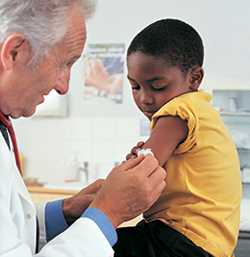Health Departments

Three critical and inter-connected transitions in the health system offer opportunities for state and local health departments (HDs) to strengthen the delivery of clinical services for HIV/AIDS, viral hepatitis, STD, and TB prevention to at-risk populations.
Medicaid Opportunities
As a result of the Affordable Care Act, millions more Americans have enrolled in Medicaid, in addition to those who obtained private insurance coverage, through the Health Insurance Marketplace. This influx of new enrollees with health insurance opens up new opportunities for health department engagement to advance public health priorities, by helping at-risk individuals obtain initial and ongoing quality preventive health service. Populations at risk for HIV, viral hepatitis, STDs, and TB are disproportionately low-income and, therefore, likely to be newly eligible for Medicaid or Marketplace coverage. This is particularly true for low-income males since single, childless males are less likely to meet the traditional Medicaid eligibility criteria.
In light of the Supreme Court decision of June 2012, states can voluntarily extend Medicaid eligibility for low-income individuals. Most, but not all, states have expanded their Medicaid program. 1 In states that have expanded Medicaid, there may be new opportunities for state HDs to collaborate with Medicaid agencies in facilitating Medicaid enrollment, promoting delivery of recommended preventive services, utilizing Medicaid data to monitor access to and utilization of preventive services, and offering additional opportunities for Medicaid reimbursement for direct services HDs provide to enrollees.
Medicaid has supported a variety of initiatives and reforms to:
- Improve effectiveness and outcomes of care
- Control costs
- Expand coverage
- Implement and expand alternative delivery systems.
Additional Resources
Preventive Services Covered Without Cost-Sharing
Persons enrolled in a variety of health plans may be able to receive recommended HIV/AIDS, viral hepatitis, STD, and TB preventive services without being responsible for a copayment, co-insurance, or deductible. HDs can increase the provision of these critical preventive services by increasing public awareness of this benefit and communicating to providers the importance of offering these services. For example, health departments, addressing chronic disease prevention, have engaged providers with public health detailing. 2, 3
Community Health Center Strengthening
Substantial investment in community health centers (CHCs) provides an opportunity for HDs to work with these core safety net providers to deliver services, assist with community outreach and education, implement new quality improvement programs, and use CHC data, as appropriate, to identify gaps in service delivery. For example, across Colorado, 18 Community Health Centers, involving 147 sites, worked with regional and local STD/HIV education and training centers to provide high quality care, addressing prevention, screening and treatment of HIV and other sexually transmitted diseases.
Additional Resources
References
1 Current status of State Medicaid Expansion Decisions. Henry J Kaiser Family Foundation.
2 Parks AV, Satter DE, Kietzman KG, Wallace SP. Opportunity Knocks for Public Health Departments: Increasing the Use of Clinical Preventive Services by Older Adults. UCLA Center for Health Policy Research, 2012.
3 Dresser MG, Short L, Wedemeyer L, et al. Public Health Detailing of Primary Care Providers: New York City’s Experience, 2003–2010. American Journal of Public Health. 2012;102(Suppl 3):S342-S352. doi:10.2105/AJPH.2011.300622.
- Page last reviewed: December 23, 2016
- Page last updated: December 23, 2016
- Content source:


 ShareCompartir
ShareCompartir


